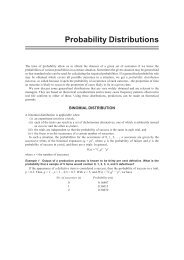International-Business-Dr-R-Chandran-E-book
International-Business-Dr-R-Chandran-E-book
International-Business-Dr-R-Chandran-E-book
Create successful ePaper yourself
Turn your PDF publications into a flip-book with our unique Google optimized e-Paper software.
128<br />
<strong>International</strong> <strong>Business</strong>- <strong>Dr</strong>. R. <strong>Chandran</strong><br />
Globally, there are several methods of detecting transfer pricing to check<br />
whether transactions between related parties have been at an ‘arm’s length’.<br />
The transaction method relies directly or indirectly on information about the<br />
prices at which similar transactions have been entered into by unrelated<br />
parties. This method is further divided into the Comparable Uncontrolled<br />
Price (CUP) method and cost plus (C+) method.<br />
Prices charged in similar business transactions between two<br />
independent parties is the yardstick adopted under the CUP method.<br />
Whereas under the C+ method, as arm’s length price is determined by<br />
applying an appropriate mark-up on the costs incurred. The transactional<br />
profit method, as the name indicates, is transaction-specific; it examines<br />
whether or not profits from a particular deal are reasonable.<br />
Importance of Transfer Pricing Regulations in Developing Countries<br />
Import of raw material, semi-finished goods for assembling and most<br />
important of all, intellectual property such as know-how and technology are<br />
areas prone to transfer pricing. Such goods or services can be sent to<br />
associate companies in India at a higher or lower rate than the prices charged<br />
to unrelated parties, to secure a global tax advantage. In today’s high-tech<br />
age, Indian companies often rely on technology and know-how from their<br />
foreign joint venture partners; thus strict regulations are very important.<br />
Regulations in Dealing with Transfer Pricing<br />
The important sections relating to transfer pricing in the Income Tax Act<br />
1961 are Section 40A (2), Section 80 1A (9) and Section 1A (10). The first<br />
enables tax authorities to disallow any expenditure made to a related party,<br />
which they feel is excessive. Certain tax benefits are available under Section<br />
80 1A such as a tax holiday for a certain number of years. If transfer pricing<br />
is suspected then the tax authorities can deny such tax holidays.<br />
The most important provision in the tax laws is in Section 92. This<br />
allows the Indian tax authorities to adjust the taxable income of the Indian<br />
party, if they feel that the prices charged in a transaction are not at an arm’s<br />
length due to close connection between the Indian entity and a foreign party.<br />
COUNTRY RISK<br />
When making overseas direct investments it is necessary to allow for risk<br />
due to the investment being in a foreign country. Country risk is one of the<br />
Only for Private Circulation





